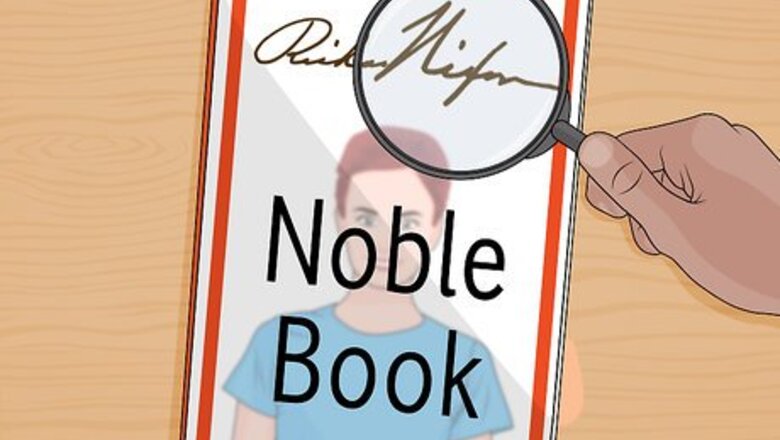
views
Reading the Autograph
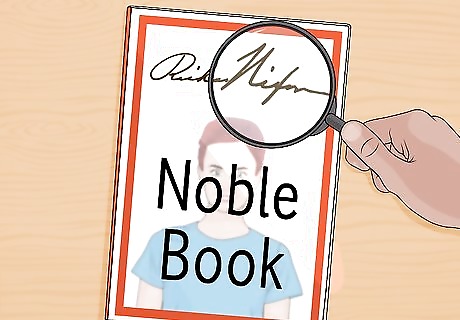
Look at examples of the person’s real signature. To spot a fake autograph, you’ll need to be thoroughly familiar with the individual’s real signature. The best way to become familiar with their signature is to examine many authentic examples of their signature firsthand. This will allow you to identify the actual size and style of the signature they typically produced. If you don’t have any examples of an individual’s signature available for direct inspection, check online for authentic examples. For instance, look at autographs of the individual in question that are sold in major auction houses or by collectibles dealers. Analyzing a large number of authentic signatures will also enable you to identify how variable someone’s autograph might be. Try to find something unique about the autograph of the person you’re interested in. For instance, Barack Obama always makes the leading letters of his first and last name (“B” and “O”) very large relative to the sizes of the other letters.
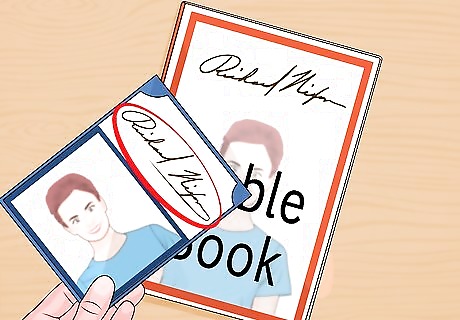
Compare your autograph against a real one. Look closely at your autograph and several authentic examples of the same individual’s autograph. Look for discrepancies between the two. If the signature appears unnaturally shaky, this could be a sign of a fake. Other telltale signs of fakery could include: the width and length of individual letters the space between letters the position of dots in lowercase “J” and “I” the general style of the handwriting (does it use cursive, print, or some combination?) a dot in the middle of an individual character (this indicates the person stopped, then started the signature)
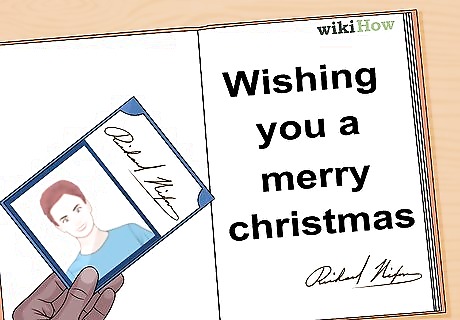
Look for other text. If you’re trying to spot a fake autograph, doing so is easier when it is included along with a handwritten letter or an inscription. Looking at a larger sample of text allows you to evaluate other handwriting elements. This additional writing sample can help you confirm the autograph’s authenticity.
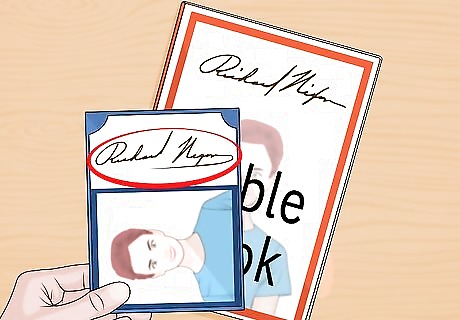
Ensure the signature is spelled correctly. In most cases, it’s reasonable to assume that in authentic autographs, the individual in question knew how to spell their own name. If the autograph you’re evaluating contains misspellings, it is likely a fake.
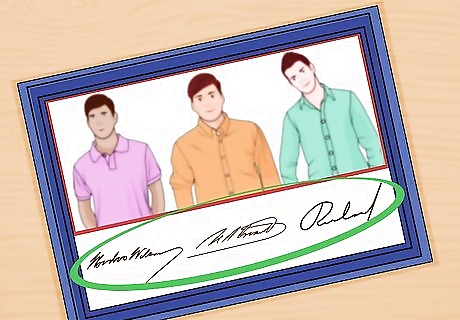
Look for lots of variation in items with multiple autographs. If you’re evaluating a baseball signed by the whole team or a production photo signed by the whole cast of a film, the individual signatures should all look a bit different. For instance, the pen or marker strokes should be of varying thicknesses. Some lines will be thick, while others will be thin. Some signatures will probably overlap. Items that have multiple autographs, all of which are of a uniform thickness, are probably fake.
Learning More About the Autograph
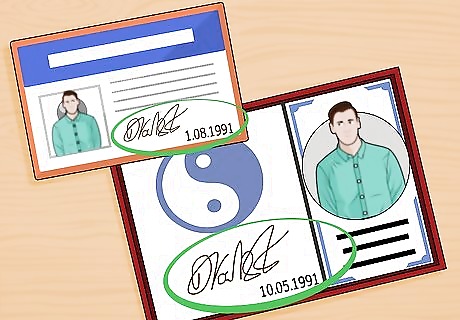
Know the date when the autograph was produced. Either consciously or unconsciously, many people change their signature over the years. Knowing when a given autograph was produced will help you spot a fake. Compare another autograph from the same time period to the one you’re
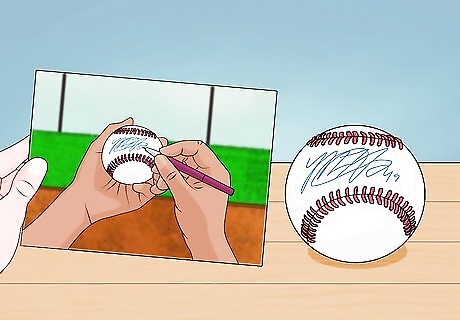
Identify the provenance. Knowing the provenance of the autograph means tracing the line of ownership back to the moment when the autograph was created. Ask the current owner of the autograph how they came to acquire it. If they claim they are not the first owner of the autograph, follow up with the person who sold them the autograph to find out more about its origin. Continue down the chain of ownership as far as possible. If you have a video or a photo that depicts the creation of the autograph you’re trying to verify, your job will be much easier. Just compare the autographed item in the video or photo to the actual object. If the two are different, you’ve spotted a fake. If you’ve nobody to talk to about an autograph’s provenance, look for corroborating documents. For instance, if someone autographs a particular item and then writes in their diary that they did so, you could use that information to establish that the autograph is authentic. You could also, in some cases, ask the supposed author of the autograph directly if they recognize the autograph as their own.

Evaluate the ink or paper. If you’re evaluating an autograph of historical significance, the paper or ink from that era should be identifiable as such. Ensure that the ink or paper from the era in which the autograph was supposedly created is historically accurate. Paper produced between 1900 and 1945, for instance, was far less absorbent than paper today. If the autograph you’re evaluating purportedly dates from that period but shows a “bleeding effect” (an uneven ink trim around each character), the autograph was likely produced by a newer pen pressed against older paper, which was less absorbent than modern paper. Like most efforts to spot a fake autograph, this is far from foolproof. Forgers often go to great lengths to produce fake autographs. They might use special inks or blank pages that really date from the historical period in which the autograph was allegedly produced. They might also artificially age photos or papers to create the appearance that they are older than they really are.
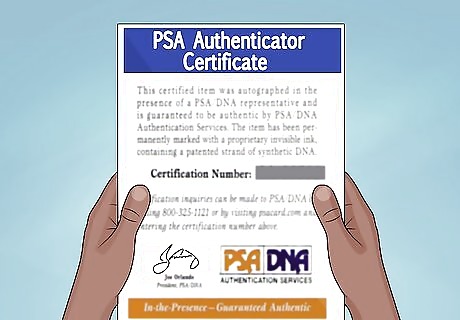
Use an authenticator. Almost every industry that produces autographed collectibles – sports, film, TV, and so on – also has at least one independent autograph authentication service. For instance, if you’re interested in autographs of golfers, you should get authenticated through the Professional Sports Authenticator (PSA) or a similar organization.
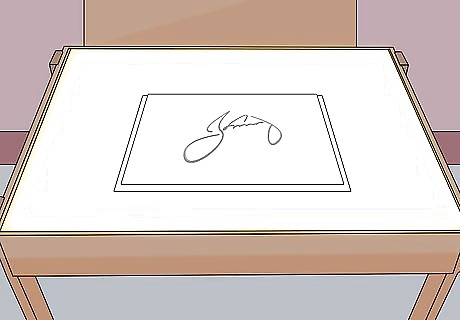
Beware of machine signatures. The only real way to identify whether a particular autograph is the product of an autopen or other machine signature device is to compare it to a known machine-produced signature. Lay the two signatures over each other on a light table or beneath a strong light source. If they align perfectly, both were machine-produced. Many people who use autopens or other mechanical signature machines to sign things have more than one signature loaded in the machine’s memory. In order to know for sure that a particular autograph was or was not produced by a machine, you need to know how many machine-produced versions of their autograph the individual in question used. Then, compare your autographed object or document against all known variations. It is possible to have an authentic document that has been “signed” by autopen. In other words, a machine-signed letter from the president still qualifies as an example of presidential correspondence (though it will fetch far less than a document containing a hand-signed autograph). Machines that mechanically reproduce signatures are often used in business and government. Machine signatures are also found on books, sporting equipment, and photos.
Identifying Preprint or Reprint Autographs
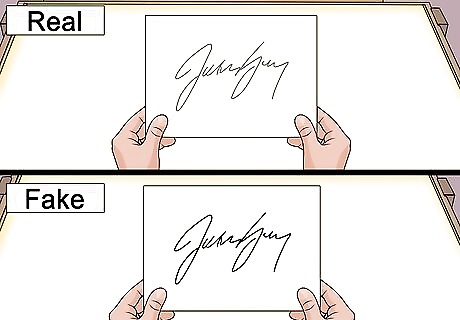
Look for a flat appearance. Preprinted (also known as “reprinted”) autographs are high-quality photo scans of an authentic signed photo. They are often sold by celebrities or licensed to collectibles shops to save the celebrity time that would be used to sign multiple copies of a photo. Reprinted autographs are therefore part of the photo itself, and will appear to lie below the glossy surface of the photo. Hold the autograph close to a bright light. A handwritten autograph will reflect differently than the rest of the photo.
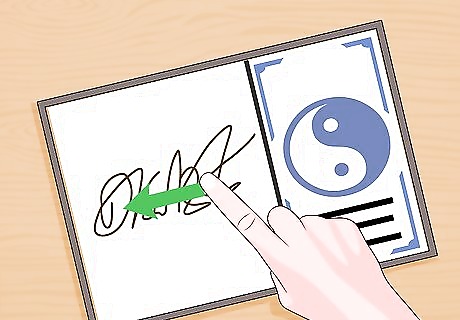
Run your finger across the autograph. If you can feel the texture of the ink on top of the photo, it could be fake. You might need some practice running your finger over signed photographs before you can identify reprint autographs. To familiarize yourself with the fine variation in texture of a photo that has been autographed, locate an old photo that you don’t mind damaging. Sign it with a similar (or identical) sort of ink. Run your finger along the surface of this “practice autograph” several times. When you’ve familiarized yourself with the difference between the photo’s surface and the ink’s surface, run your finger over the autograph you’re evaluating. Touching the photo could cause the ink to smudge and transfer oils from your skin that will, over time, cause the photo to degrade.
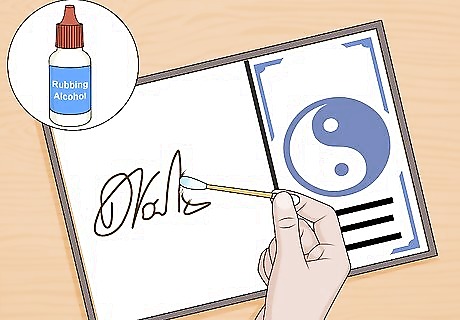
Try to remove the ink. Dip a cotton swab in rubbing alcohol and try to erase a bit of the signature. If you’re looking at a preprint autograph, you won’t be able to remove the ink. This method is not ideal, of course, because if you do have an authentic autograph, you will have erased some portion of it.













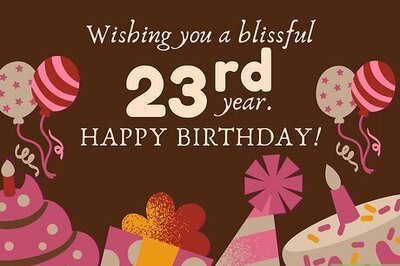
Comments
0 comment